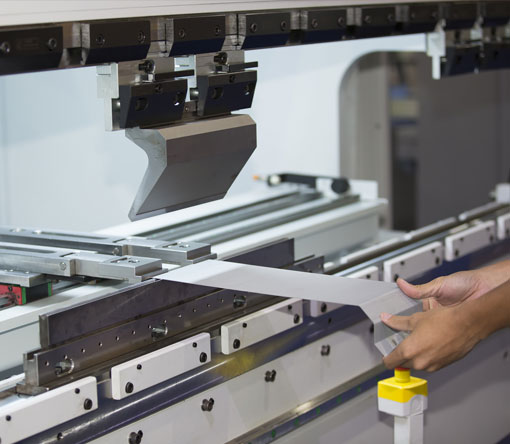Sheet metal fabrication is an essential process in the world of manufacturing, with applications ranging from the automotive and aerospace industries to electronics and construction. This versatile technique involves the manipulation of sheet metal - typically made of steel, aluminum, or other metals - to create various products and components. In this comprehensive guide, we'll explore the ins and outs of sheet metal fabrication, including the techniques, tools, and tips that can help you excel in this craft.
Understanding the Basics of Sheet Metal Fabrication
Before we dive into the nitty-gritty of sheet metal fabrication, let's start by understanding what it entails. The process involves cutting, bending, and shaping sheets of metal to create three-dimensional structures, components, or assemblies. Some common examples of sheet metal products include automotive body panels, aircraft wings, and metal roofing.
There are several techniques involved in sheet metal fabrication, including:
1. Cutting: This involves removing unwanted material from the sheet metal to create the desired shape. Cutting can be done using various methods, such as shearing, laser cutting, plasma cutting, and water jet cutting.
2. Bending: This is the process of deforming sheet metal along a straight axis, typically using a brake press or bending machine. Bending can create various shapes, such as angles, channels, and tubes.
3. Forming: This involves shaping the sheet metal into complex, three-dimensional forms using specialized tools and equipment, such as stamping presses, roll formers, and hydroforming machines.
4. Joining: This is the process of attaching two or more pieces of sheet metal together using techniques like welding, riveting, or using adhesives.
5. Finishing: This step involves applying treatments to the surface of the sheet metal to improve its appearance, corrosion resistance, or other properties. Common finishing techniques include painting, powder coating, and anodizing.
Essential Tools for Sheet Metal Fabrication
To excel in sheet metal fabrication, it's crucial to familiarize yourself with the various tools and equipment used in the process. Some of the essential tools include:
1. Shears: These are used for cutting sheet metal and come in various forms, such as hand shears, power shears, and guillotine shears.
2. Brake Presses: These machines are used for bending sheet metal and can handle a wide range of materials and thicknesses.
3. Punching Machines: These devices use a punch and die to create holes or other shapes in sheet metal.
4. Stamping Presses: These machines use dies to form complex shapes and patterns in sheet metal through a process called stamping.
5. Roll Formers: These machines are used to create continuous, uniform bends in sheet metal, such as those found in metal roofing or siding.
6. Welders: These tools are used to join pieces of sheet metal together using various welding techniques, such as MIG, TIG, or spot welding.
7. Grinders and Sanders: These tools are used to smooth and finish the surface of sheet metal products, removing burrs, sharp edges, and other imperfections.
Tips for Successful Sheet Metal Fabrication
To ensure the success of your sheet metal fabrication projects, consider the following tips:
1. Choose the right material: The type of material you use will greatly impact the fabrication process and the final product. Consider factors like strength, weight, corrosion resistance, and cost when selecting a material.
2. Plan your design carefully: A well-thought-out design can save time, reduce material waste, and ensure a high-quality final product. Be sure to consider factors like tolerances, bend allowances, and material thickness in your design.
3. Use the right tools and equipment: Having the right tools and equipment for the job is crucial for achieving accurate and consistent results. Invest in high-quality tools and maintain them properly to ensure optimal performance.
4. Practice proper safety measures: Sheet metal fabrication can be dangerous, with risks like cuts, burns, and eye injuries. Always wear appropriate personal protective equipment (PPE), such as gloves, safety glasses, and ear protection, and follow safety guidelines when working with sheet metal.
5. Continuously improve your skills: Sheet metal fabrication is a craft that requires constant learning and improvement. Attend workshops, watch online tutorials, and seek advice from experienced fabricators to hone your skills and stay up-to-date with the latest techniques and technologies.
By understanding the various techniques, tools, and tips involved in sheet metal fabrication, you can master this versatile craft and create high-quality products and components for a wide range of industries. Whether you're a seasoned professional or just starting in the world of sheet metal fabrication, continuous learning and improvement will help you stay ahead of the curve and excel in this ever-evolving field.
sheet metal fabrication













